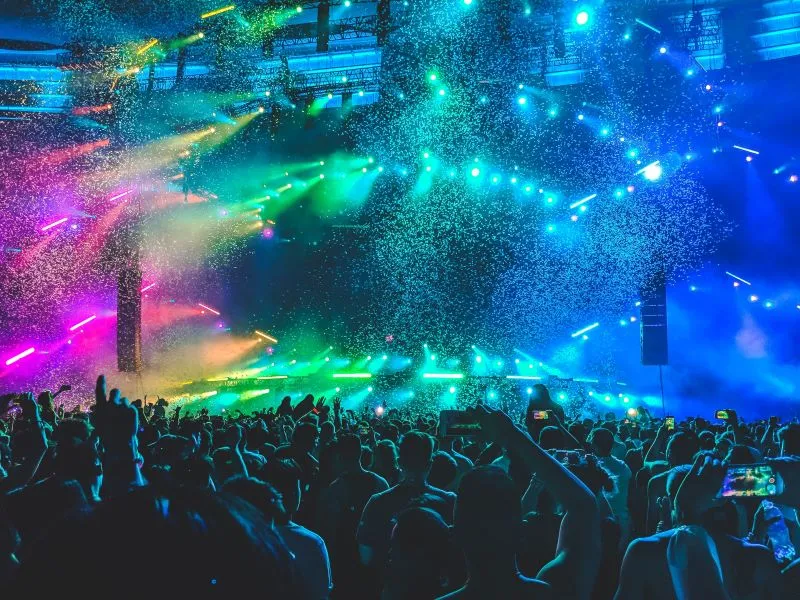Music Meets the Metaverse: Virtual Concerts Go Mainstream


El Valle Grita – Virtual concerts in the metaverse are no longer experimental—they’ve become a major part of the global music industry. Fans log into immersive 3D worlds to watch live performances, interact with avatars, and explore digital venues. Musicians headline these shows wearing motion-capture suits while fans attend from living rooms, bedrooms, or VR cafés. The experience is social, customizable, and borderless. It marks a shift in how music is shared, consumed, and celebrated.
“Read More: Future Developments in Radiation Protection, How to Protect yourself Properly”
Big-name artists headline virtual stages with massive audiences
Major stars like Ariana Grande, Travis Scott, and BLACKPINK have performed in metaverse spaces with millions in attendance. These events shatter geographic limits, allowing global fans to join a single show. Performances are enhanced with visuals impossible in real life—gravity-defying stages, reactive skies, and shape-shifting backdrops. Artists reach new fans and gain exposure in untapped markets. The virtual stage becomes a playground for creativity and mass connection.
Fan interaction goes beyond passive viewing and into co-creation
In metaverse concerts, fans don’t just watch—they participate. They customize avatars, choose dance moves, trigger visual effects, or send virtual gifts. Some shows let users vote on song choices or stage changes in real time. This active role creates a sense of belonging and influence. Fans aren’t just audience members—they’re collaborators. This level of engagement is impossible at traditional shows and keeps users coming back.
“Read About: Music Festivals: Hybrid Concerts Merging Holograms and Live Bands”
Platforms like Roblox, Fortnite, and Decentraland lead the movement
Gaming platforms are now doubling as concert halls. Roblox and Fortnite host multi-million-viewer shows, while Decentraland and The Sandbox focus on crypto-linked music experiences. These ecosystems offer pre-built audiences, custom environments, and in-game commerce. Musicians can sell NFT-based merch, backstage passes, or even limited music tracks. These platforms transform concerts into full digital economies.
Independent musicians find new visibility in virtual venues
The metaverse isn’t just for superstars. Independent and emerging artists also perform in virtual clubs or art spaces, often organized by online collectives. These intimate shows attract niche audiences that are deeply loyal. Artists get more control over performance design, ticket pricing, and merch. No touring budget is needed—just creativity and access to VR-friendly tools. For many, the metaverse offers a path to build a fanbase without gatekeepers.
Virtual merch sales generate new revenue for artists and developers
In addition to ticketing, virtual concerts generate revenue through merchandise. Fans buy digital clothing, emotes, posters, and collectible NFTs. Some items are wearable inside the platform, while others are stored in wallets. This new layer of commerce supports artists and fuels developer communities. Every virtual tour now includes a custom drop strategy. The merch becomes part of the fan’s identity inside the metaverse.
Music labels and tech companies form official metaverse partnerships
Record labels are partnering with tech firms to co-produce metaverse concerts. These deals include licensing rights, brand sponsorships, and monetization tools. Labels see the potential for fan data insights and new music formats. Tech firms gain access to exclusive talent. Together, they create large-scale spectacles with global reach. These collaborations shape the future of music marketing and digital entertainment.
Real-world venues now mirror metaverse designs for hybrid shows
Physical concert venues are adapting by blending real and virtual elements. Some stages mimic metaverse visuals, while others livestream real shows into digital worlds. This hybrid model lets fans choose their experience: physical presence or virtual attendance. It also future-proofs venues and festivals by extending their reach. The boundary between digital and physical performance is fading fast.
Accessibility improves as geography and mobility become irrelevant
Virtual concerts remove many barriers faced by fans in remote areas or with disabilities. No travel, crowds, or loud volumes are required. Users just log in from home, using VR headsets or regular screens. Captioning, customizable sound, and controlled environments support diverse needs. For many, metaverse concerts are their first live music experience. Inclusion becomes a design feature—not just an afterthought.
Community hubs and fan clubs form around virtual concert spaces
Fans often return to the same platforms to connect with others who attended the same shows. Virtual fan clubs and concert hubs emerge. Members swap outfits, share clips, or plan their next meetup. These communities extend the concert vibe long after the music stops. Relationships form across borders and time zones. The social layer becomes just as important as the music itself.
The metaverse reshapes artist branding beyond stage performance
Musicians in the metaverse aren’t limited by physical image. Avatars can fly, glow, shift shape, or wear impossible fashion. This opens up new branding opportunities. Artists craft entire worlds around their music—complete with lore, custom environments, and interactive elements. Fans explore these worlds like games. Music becomes an experience, not just a product. This evolution strengthens artist identity and fan loyalty on a deeper level.